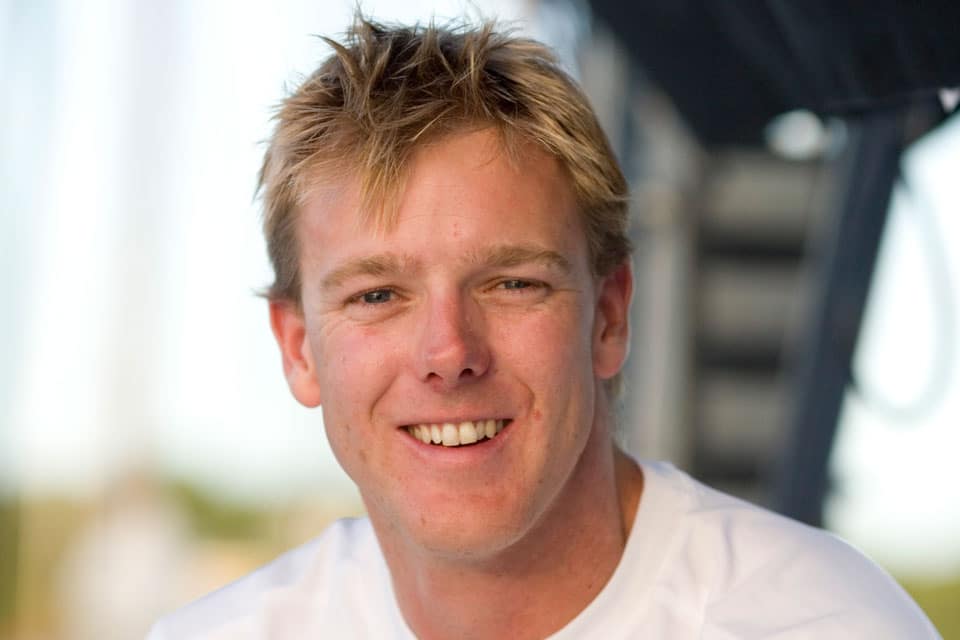
Ian960
Today dawned pretty much as forecast, with a very light southwesterly breeze. As planned, we met for a 7:30 breakfast and left the dock at 8:15 to give us some time to re-tune the rig before racing. Motoring out to what looked like a complete glass-out, we wondered whether it had all been worth it. But we’re sailing an RC44. I would not recommend the boat for a weekend cruise down the coast—the accommodation is a bit lacking—but it sails like a dream, and in these conditions absolutely comes into its own. With the masthead unit reading 7 knots of wind, but with zero breeze at sea level, we pulled up the sails and bore off onto a build angle. To our delight, the boat heeled to 22 degrees, and off we went at 7 knots.
We had two goals for the session. Overnight, we lengthened the travel on our forestay ram, as we wanted to see how far back we could rake the mast without over bending the mast. Secondly, following some advice from Russell Coutts, we wanted to take all of the leeward sag out of our rig. We have three sets of spreaders, so a re-tune involves tightening three sets of diagonals in the right proportions and the right amount. But the rig-tuning brain trust on our boat—Larry Leonard, Jon Gundersen, and John Hayes—did a great job getting it pretty close the first time, so one further small adjustment was all we needed. We had arranged with Russell the previous evening for him to come aboard and have a look at our setup, and he talked us through using the checkstay to not only straighten the mast fore and aft, but also to pull the middle of the mast further to windward. This helps open up the slot and allows us to sheet the genoa in harder around the leeward spreaders.
So we were eager to get into the race, feeling a lot more confident with how our mainsail was setting up. The wind shifted left just before start time, and we started two-thirds of the way down towards the pin with one boat to windward, two to leeward, and one boat tacking out and ducking immediately. I thought we had a shot at crossing the boat to windward of us so called the tack, but just as we went for it, they wound up and it turned into a dip. Not ideal, but at least we were on the right shift. Soon, the whole fleet was on port and now was our opportunity to see the effect of our rig changes. The conclusion is that we’ve made a big step forward. Unfortunately, having made the changes, we have a lot to learn about how to make gear changes in a race situation. Lesson 1 came about five minutes into the race. In the minute it took us to figure out how to adjust to the increase in pressure, we dropped to the second row. What was pleasing, however, was that, unlike previous days, where once we were behind we dropped off the back of the fleet, we were able to work our way back into the mix. Unfortunately, we ended up in fifth place again. We still have a long way to go, but it’s certainly a lot more fun being in a race than following the fleet at the back.
With a forecast of dying breeze, the race officer decided to send us in. So we spent the afternoon measuring our new settings and planning our campaign for the year. Tomorrow, we’ll go out early again to put the finishing touches on the rig tune that we didn’t manage to get finished today. We’re expecting the PRO to shoot for three races tomorrow, so it’s going to be a long day.









